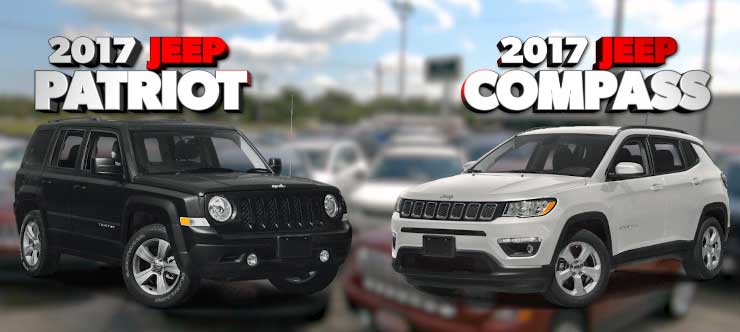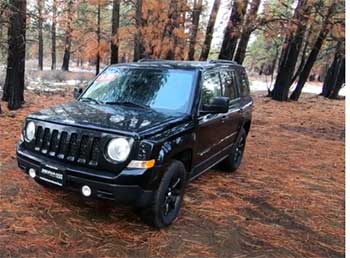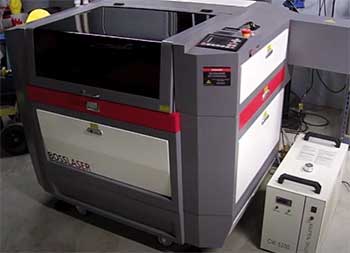I’ve always been fascinated by Jeep’s rugged charm, and when it came time to choose between the Jeep Compass and Jeep Patriot, I found myself weighing their unique strengths and quirks. Both are compact SUVs with Jeep’s iconic DNA, but which one suits your lifestyle? In this article, I’ll break down their key features, performance, and practical differences to help you decide.
From off-road prowess to daily usability, I’ll share my insights as a curious driver, comparing these two models to guide you toward the right choice for your adventures.

Comparison Table: Jeep Compass vs. Jeep Patriot (2017 Models)
| Feature | Jeep Compass (2017) | Jeep Patriot (2017) |
| Starting Price (MSRP) | $20,995 | $18,040 |
| Engine Options | 2.0L I4 (158 hp), 2.4L I4 (180 hp) | 2.0L I4 (158 hp), 2.4L I4 (172 hp) |
| Fuel Economy (MPG) | 22 city / 31 highway (2.4L) | 20 city / 26 highway (2.4L) |
| Cargo Volume (cu ft) | 25.5 (rear seats up), 62.7 (seats folded) | 23.0 (rear seats up), 62.7 (seats folded) |
| Ground Clearance | 7.8 in (standard), 8.5 in (Trailhawk) | 8.1 in |
| 4WD Systems | Freedom Drive I, Trailhawk w/ Selec-Terrain | Freedom Drive I, Freedom Drive II (Trail Rated) |
| Interior Features | Uconnect 4, 7-inch touchscreen (higher trims) | Basic Uconnect, optional 6.5-inch touchscreen |
| Safety Rating (NHTSA) | 4/5 stars | 4/5 stars |
| Towing Capacity | Up to 2,000 lbs | Up to 2,000 lbs |
| Styling | Modern, rounded, urban appeal | Boxy, classic Jeep look |
My Journey with Jeep’s Compact SUVs
As a longtime fan of Jeep’s go-anywhere spirit, I’ve spent hours researching and test-driving both the Compass and Patriot to understand what sets them apart. These compact SUVs, built on the same GS platform, share a lot of DNA, but their differences in style, performance, and practicality make choosing between them a personal decision.
I’ll walk you through my experience, highlighting the pros and cons of each to help you find the one that fits your needs—whether you’re navigating city streets or tackling muddy trails.
Jeep Compass: The Modern Adventurer
When I first slid into the driver’s seat of a 2017 Jeep Compass, I was struck by its sleek, modern vibe. It’s like Jeep took the rugged essence of their brand and wrapped it in a package that feels at home in urban settings.
The Compass underwent a significant redesign mid-2017, so I focused on the updated model for a fair comparison with the 2017 Patriot, the final year of its production.
Pros of the Jeep Compass
- Refined Styling: The Compass has a polished, crossover-like look with smooth lines and a mini-Grand Cherokee aesthetic. It’s less boxy than the Patriot, which I found appealing for blending into city life while still sporting Jeep’s iconic seven-slot grille.
- Improved Interior Quality: The 2017 redesign brought better materials, with soft-touch surfaces and contrast stitching in higher trims. The Uconnect 4 system with a 7-inch touchscreen (available on Latitude and Limited trims) felt intuitive and responsive.
- Superior Fuel Economy: With the 2.4L engine, I got an EPA-estimated 31 mpg on the highway, which is a noticeable edge over the Patriot’s 26 mpg. This makes it a better pick for long commutes or road trips.
- Trailhawk Trim for Off-Roading: The Compass Trailhawk is a standout, with a lifted ride height (8.5 inches), skid plates, and a rock mode in its Selec-Terrain system. I took it on a gravel trail, and it handled ruts and bumps with confidence.
- Slightly More Front Legroom: At 41.8 inches, the Compass offers a touch more front legroom than the Patriot’s 40.6 inches, which I appreciated as a taller driver.
Cons of the Jeep Compass
- Higher Price Point: Starting at $20,995, the Compass is pricier than the Patriot. Fully loaded trims like the Limited or Trailhawk can push the price closer to $30,000, which feels steep for a compact SUV.
- Smaller Cargo Space: With 25.5 cubic feet behind the rear seats, the Compass has slightly less cargo room than the Patriot’s 26.0 cubic feet. It’s a small difference, but it matters for weekend getaways.
- Underpowered Base Engine: The 2.0L 158-hp engine felt sluggish during highway merges, especially with a full load. The 2.4L 180-hp engine is better but only comes standard on higher trims.
- Blind Spots: The Compass’s sloping rear design creates larger blind spots due to thick C-pillars. I had to rely heavily on the rearview camera during parking.
Jeep Patriot: The Budget-Friendly Classic
The Jeep Patriot, on the other hand, felt like a throwback to Jeep’s roots. Its boxy shape and round headlights reminded me of the classic Cherokee, giving it a rugged, no-nonsense appeal. Discontinued after 2017, the Patriot was Jeep’s budget-friendly compact SUV, and I could see why it remained popular for cost-conscious buyers.
Pros of the Jeep Patriot
- Affordable Price: With a starting MSRP of $18,040, the Patriot was dubbed “America’s most affordable SUV” in 2017. It’s a steal for those wanting Jeep capability without breaking the bank.
- Spacious Interior: The Patriot offers more rear legroom (39.6 inches vs. 38.3 inches) and headroom (39.9 inches vs. 38.5 inches) than the Compass, making it comfier for backseat passengers.
- Cargo Versatility: Its boxy shape translates to 26.0 cubic feet of cargo space with seats up and 62.7 cubic feet with seats folded, slightly edging out the Compass for practicality.
- Trail Rated Option: The Freedom Drive II package includes a low-range mode, skid plates, and all-terrain tires, earning the Patriot a Trail Rated badge. I tested it on a muddy trail, and it held its own impressively.
- Classic Jeep Styling: The Patriot’s angular design and round headlights appeal to Jeep purists who love that traditional, rugged look.
Cons of the Jeep Patriot
- Outdated Interior: The Patriot’s cabin feels dated, with hard plastics and a less user-friendly Uconnect system. Even the optional 6.5-inch touchscreen felt clunky compared to the Compass’s setup.
- Lower Fuel Economy: At 20 city / 26 highway mpg, the Patriot lags behind the Compass, which could add up at the pump over time.
- Less Refined Ride: On highways, I noticed more road noise and a stiffer ride compared to the Compass’s smoother handling.
- Discontinued Model: Since production ended in 2017, finding a new Patriot is impossible, and used models may have higher maintenance costs as they age.
Performance and Powertrains: Under the Hood
Both the Compass and Patriot share similar engine options, but their performance feels distinct. The Compass’s 2.4L 180-hp engine, standard on higher trims, delivers a bit more pep than the Patriot’s 2.4L 172-hp engine. I found the Compass’s nine-speed automatic transmission (available on 4WD models) smoother than the Patriot’s six-speed automatic or CVT, which could feel hesitant during acceleration.
The base 2.0L 158-hp engine in both models is adequate for city driving but struggles with heavy loads or steep inclines. If you’re planning to tow (up to 2,000 lbs for both), I’d recommend the 2.4L engine for either vehicle. The Patriot’s Freedom Drive II system, with its low-range mode, gives it a slight edge for serious off-roading, but the Compass Trailhawk’s Selec-Terrain system (with modes like Snow, Sand, and Rock) offers more versatility for varied terrains.
Fuel economy is where the Compass shines. Its 31 mpg highway rating is a boon for long-distance drivers, while the Patriot’s 26 mpg feels less competitive. During my test drives, the Compass felt more responsive in urban settings, while the Patriot’s sturdier build gave me confidence on rougher trails.
Off-Road Capability: Jeep’s True Test

Jeep’s reputation is built on off-road prowess, and both the Compass and Patriot deliver, though in different ways.
The Patriot’s Freedom Drive II package, with its Trail Rated badge, includes features like hill descent control and a low-range 4WD mode, making it a solid choice for tackling snow, mud, or sand.
I took a Patriot through a forested trail with loose gravel, and it navigated obstacles with surprising ease for a compact SUV.
The Compass, especially in Trailhawk trim, takes things up a notch. Its 8.5-inch ground clearance (vs. the Patriot’s 8.1 inches) and specialized crawl mode made light work of rocky paths during my test.

The Selec-Terrain system allowed me to tweak settings for different conditions, which felt more intuitive than the Patriot’s setup.
However, for casual off-roading, both vehicles are more than capable, and the choice comes down to whether you prioritize the Patriot’s classic approach or the Compass’s modern tech.
Considering Other Upgrades? Bilstein B6 vs. B8 Coilovers
Interior and Comfort: Where You’ll Spend Your Time
Inside, the Compass feels like a step into the modern era. Its 2017 redesign brought softer materials, a more polished dashboard, and available features like a panoramic sunroof and heated seats. The Uconnect 4 system was a highlight, with crisp graphics and easy smartphone integration. However, I noticed the Compass’s rear seats were a bit cramped for taller passengers, and the sloping roofline slightly reduced cargo flexibility.
The Patriot, by contrast, prioritizes space over sophistication. Its boxy design translates to more rear legroom and headroom, which my friends appreciated during a group road trip. The cargo area felt marginally roomier, especially for taller items, thanks to the Patriot’s squared-off shape. But the interior materials? Hard plastics dominate, and the base Uconnect system feels like a relic compared to the Compass. If you value tech and refinement, the Compass wins; if space and simplicity are your priorities, the Patriot has the edge.
Safety and Reliability: Peace of Mind
Both SUVs come equipped with over 30 safety features, including airbags, stability control, and available blind-spot monitoring. The NHTSA gave both the 2017 Compass and Patriot a 4-out-of-5-star safety rating, which is solid but not class-leading. I felt confident in both vehicles’ ability to protect, though the Compass’s available rearview camera and parking sensors made city driving less stressful.
Reliability is a mixed bag. The Patriot, being an older design, has a reputation for being dependable but can face issues like premature rust on the subframe or CVT transmission wear if not maintained properly. The Compass, especially post-2017, benefits from improved build quality, but early first-generation models (2007–2010) had complaints about electrical issues and suspension wear. Checking maintenance records is crucial for either, especially for used Patriots.
Styling: Classic vs. Contemporary
The Patriot’s boxy, rugged look is pure Jeep nostalgia. Its round headlights and sharp edges scream “classic SUV,” which I found charming in a retro way. It’s the choice for those who want their Jeep to look like it belongs on a mountain trail, even if it’s parked at the grocery store.
The Compass, however, leans into a sleeker, urban aesthetic. Its rounded lines and refined grille make it look like a smaller Grand Cherokee, which I appreciated for its versatility in city and suburban settings. During my test drives, the Compass turned more heads, but the Patriot’s traditional vibe resonated with Jeep purists. Your choice here boils down to personal taste—do you want rugged charm or modern flair?
Practicality and Ownership Costs
For daily driving, both SUVs are nimble and easy to park, thanks to their compact size. The Patriot’s lower starting price makes it a budget-friendly option, especially for used buyers. According to iSeeCars, a used 2017 Patriot ranges from $7,999 to $17,820, compared to $9,904 to $19,996 for a 2017 Compass, reflecting the Patriot’s affordability advantage.
However, the Compass’s better fuel economy and updated tech may save money in the long run, especially for frequent drivers. Maintenance costs for both are comparable, but the Patriot’s discontinued status means parts availability could become an issue down the line. Insurance costs also vary—I found the Patriot slightly more expensive to insure in some regions, possibly due to its older design.
My Test Drive Experience
Test-driving both vehicles gave me a real-world feel for their differences. The Compass felt smoother on highways, with less road noise and a more car-like ride. Its Trailhawk trim impressed me on a rocky trail, where the Selec-Terrain system adapted seamlessly to changing conditions.
The Patriot, meanwhile, felt sturdier on rough terrain, and its boxy shape made it easier to gauge the vehicle’s edges when navigating tight trails. However, its interior noise and dated tech were noticeable drawbacks during longer drives.
Which Jeep Is Right for You?
Choosing between the Compass and Patriot depends on your priorities. If you want a modern, fuel-efficient SUV with better tech and off-road capability (especially in Trailhawk guise), the Compass is the way to go. It’s pricier, but its refinements make it a versatile daily driver. If budget is your main concern and you love classic Jeep styling with solid off-road chops, the Patriot is a fantastic value, especially on the used market.
For me, the Compass’s blend of style, efficiency, and tech tipped the scales, but I couldn’t help but admire the Patriot’s rugged simplicity. Test-drive both if you can—your driving style and needs will ultimately decide the winner.
Frequently Asked Questions (FAQ)
Yes, the second-generation Jeep Compass replaced both the first-generation Compass and the Patriot after the latter’s discontinuation in 2017. The redesigned Compass took over as Jeep’s compact SUV offering.
The Patriot’s lower price comes from its simpler design, older technology, and use of cost-effective materials. It was marketed as an affordable entry into the Jeep lineup, with a starting MSRP of $18,040 in 2017.
The Jeep Compass is generally good, especially post-2017 models with improved interiors and tech. It offers solid off-road capability and fuel efficiency but may feel underpowered with the base engine and pricier than competitors.
Avoid 2007–2010 Jeep Compass models, as they had issues with build quality, electrical problems, and suspension wear. Post-2011 models, especially after the 2017 redesign, are more reliable.
Conclusion
As I’ve explored the Jeep Compass and Patriot, I’ve seen how each offers a unique take on Jeep’s legacy. The Compass brings modern flair and efficiency, perfect for those balancing city life and weekend adventures. The Patriot, with its classic look and budget-friendly price, appeals to purists and bargain hunters. Your choice depends on what you value—style and tech or affordability and simplicity. Test-drive both to feel their vibe, and let your needs guide you to the Jeep that’ll join you on your next journey. Happy driving!

